Pal-GHK (also called palmitoyl tripeptide-1 and palmitoyl oligopeptide) is a synthetic peptide known for its effects on collagen, skin health, and skin pigment. It is currently under investigation for its ability to boost collagen synthesis in animal models as well as for its ability to stimulate blood vessel growth.
Sequence
Pal-Gly-His-Lys
CAS Number
147732-56-7
Molecular Formula
C30H54N6O5
Molecular Weight
578.80
PAL-GHK Related research
Palmitoyl Oligopeptide (Pal-GHK), one of the two active ingredients in Matrixyl 3000, consists of a short chain of three amino acids (also known as GHK peptide or Glycine-Histidine-Lysine) linked to palmitic acid, a fatty acid, which is added to increase the peptide’s oil-solubility and thus its permeability to the skin.
The peptide GHK is a fragment of the type I collagen molecule and is considered a biological indicator of increased skin matrix degradation. In fact, when collagen is degraded, more small fragments, including GHK, are produced in the body, and GHK is thought to stimulate feedback loops that trigger the synthesis of new collagen and other components of the skin matrix.
When the major skin matrix-producing cells (fibroblasts) detect elevated levels of GHK, they “assume” that the skin matrix is being lost at a higher rate and begin to synthesize it more aggressively.
For this reason, Pal-GHK (a version of GHK designed to better penetrate the skin) is designed to stimulate replenishment of the skin matrix through topical application, resulting in wrinkle reduction, skin tightening and other benefits.
Palmitoyl Oligopeptide (also known as Palmitoyl Pentapeptide, Dermaxyl, Matrixyl, and Matrixyl 3000) is an engineered amino peptide that, when added to cultures of fibroblasts (key skin cells), stimulates the production of collagen, elastin, and glucosaminoglycans. These are key components of healthy looking skin.
Clinically proven to reduce wrinkle depth by increasing the production of hyaluronic acid and collagen, Palmitoyl Oligopeptides (PO) are synthetic proteins that are fragments of collagen bound to palmitic acid, giving them greater lipophilicity, which improves their stability and enhances their affinity for human skin. As with Palmitoyl Pentapeptide-3 (Palmitoyl Pentapeptide 3), one can think of PO as a man-made precursor to collagen.
COA
HPLC
MS
- Goldsberry, S. & Garcines, L. Anti-aging cosmeceutical composition. (2013).
- Pickart, L., Vasquez-Soltero, J. M. & Margolina, A. GHK-Cu may Prevent Oxidative Stress in Skin by Regulating Copper and Modifying Expression of Numerous Antioxidant Genes. Cosmetics 2, 236–247 (2015).
- Trookman, N. S., Rizer, R. L., Ford, R., Mehta, R. & Gotz, V. Clinical assessment of a combination lip treatment to restore moisturization and fullness. J. Clin. Aesthetic Dermatol. 2, 44–48 (2009).
- Dupont, E. et al. Clinical efficacy of a serum integrating multiple cosmetic ingredients in the management of erythema of the face in aging skin. J. Cosmet. Dermatol. 11, 207–212 (2012).
- Bradley, E. J., Griffiths, C. E. M., Sherratt, M. J., Bell, M. & Watson, R. E. B. Over-the-counter anti-ageing topical agents and their ability to protect and repair photoaged skin. Maturitas 80, 265–272 (2015).
Article/Literature Citation Notes
The purpose of quoting the scientist and professor's article is to acknowledge, recognise and applaud the exhaustive development work that has been done to undertake this peptide research. The scientist does not in any way support or advocate the purchase, sale or use of this product for any reason, and MOL Changes has no affiliation or relationship, implied or otherwise, with the scientist.
warning
These products are intended for scientific purposes only for in vitro research and are not to be used for human, animal or unethical experiments, in vitro research (Latin: in glass) is conducted in vitro. These products are not drugs and are not approved by the Food and Drug Administration in any country for the prevention, treatment or cure of any medical condition, disease or illness. The introduction of this product into humans or animals in any form is strictly prohibited by law.

Product information navigation
PAL GHK Structure
- Sequence:Pal-Gly-His-Lys
- CAS Number:147732-56-7
- Molecular Formula:C30H54N6O5
- Molecular Weight: 578.80g/mol
What is PAL GHK?
PAL-GHK is a matrikine signaling peptide that acts on the dermis to promote the synthesis of extracellular matrices such as collagen and glycosaminoglycans, which strengthens the dermis, resulting in thicker, firmer skin, wrinkle relief, and greater resistance to UV exposure.
PAL GHK Effects
Palmitoyl Oligopeptide (Pal-GHK), one of the two active ingredients in Matrixyl 3000, consists of a short chain of three amino acids (also known as GHK peptide or Glycine-Histidine-Lysine) linked to palmitic acid, a fatty acid, which is added to increase the peptide’s oil-solubility and thus its permeability to the skin.
The peptide GHK is a fragment of the type I collagen molecule and is considered a biological indicator of increased skin matrix degradation. In fact, when collagen is degraded, more small fragments, including GHK, are produced in the body, and GHK is thought to stimulate feedback loops that trigger the synthesis of new collagen and other components of the skin matrix.
When the major skin matrix-producing cells (fibroblasts) detect elevated levels of GHK, they “assume” that the skin matrix is being lost at a higher rate and begin to synthesize it more aggressively.
For this reason, Pal-GHK (a version of GHK designed to better penetrate the skin) is designed to stimulate replenishment of the skin matrix through topical application, resulting in wrinkle reduction, skin tightening and other benefits.
Palmitoyl Oligopeptide (also known as Palmitoyl Pentapeptide, Dermaxyl, Matrixyl, and Matrixyl 3000) is an engineered amino peptide that, when added to cultures of fibroblasts (key skin cells), stimulates the production of collagen, elastin, and glucosaminoglycans. These are key components of healthy looking skin.
Clinically proven to reduce wrinkle depth by increasing the production of hyaluronic acid and collagen, Palmitoyl Oligopeptides (PO) are synthetic proteins that are fragments of collagen bound to palmitic acid, giving them greater lipophilicity, which improves their stability and enhances their affinity for human skin. As with Palmitoyl Pentapeptide-3 (Palmitoyl Pentapeptide 3), one can think of PO as a man-made precursor to collagen.
Manufacturer Information
- PAL GHK is manufactured by MOL Changes factory.
- PAL GHK supplier MOL Changes.
- Maximum acceptable production volume: 100000 bottles.
- Content standard: net peptide.
- Purity: ≥98% for all products.
- Customization: 1mg-1g size customization is acceptable


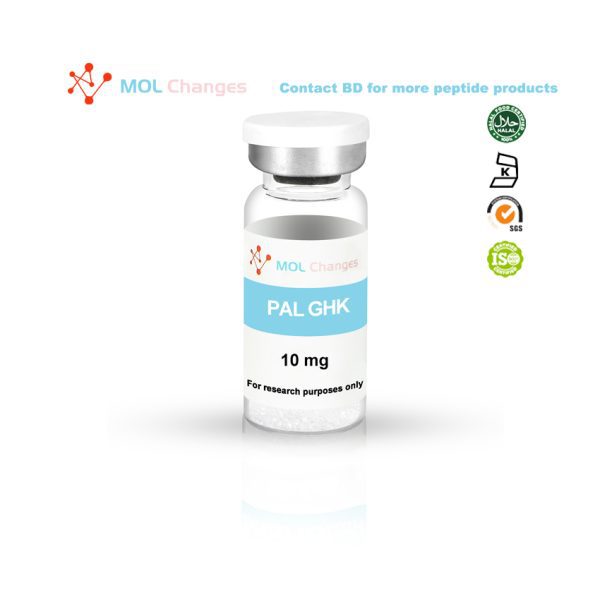
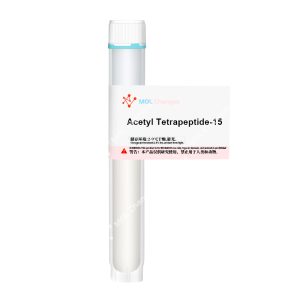
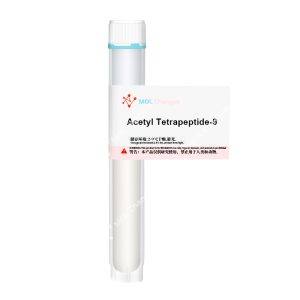
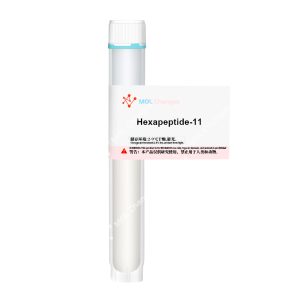
Reviews
There are no reviews yet.